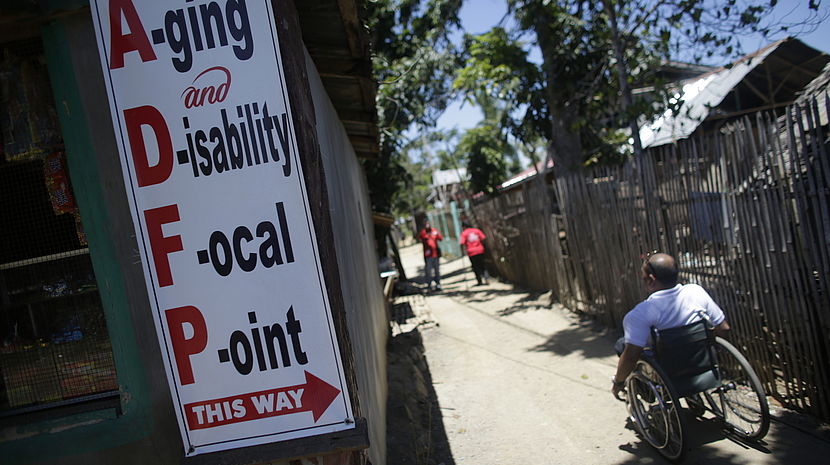Active Participation: Key to Inclusion

Typhoon Haiyan Philippines - Ageing and Disability Focal Points (ADFPs) in early 2014
CBM/John Javellana
First-hand accounts from persons with disabilities who have been actively involved in emergency response, showing how such unique knowledge and skills are essential if humanitarian action is to 'leave no one behind'.
Challenging preconceptions and changing attitudes
Publications about humanitarian work and disability generally focus on how the exclusion of persons with disabilities from emergency aid increases casualty rates, psychosocial impact, and health issues. Not only are these negative effects directly impacting the individual people, but also they reduce the ability of their immediate families to cope and ultimately impede the recovery of society as a whole. Indeed, all of this is indisputable and the humanitarian community is becoming aware of it.
But this document, produced by CBM and the International Disability Alliance, goes one step further, and in doing so it will challenge preconceptions and change attitudes. By reading the first-hand accounts, we hear how persons with disabilities, not through any particular talent or skill but from unique knowledge gained through life experience, are ideally placed to provide insights, ideas and leadership, to supply essential data, and to fill the gaps in humanitarian response that cause this exclusion.
Following these testimonies, the ‘Charter on Inclusion of Persons with Disabilities in Humanitarian Action’ provides an agenda to make humanitarian action address the rights of persons with disabilities and, at the time of writing, is being endorsed by humanitarian actors, from States to UN agencies and NGOs at all levels. Among the commitments, ‘Participation’ clearly spells out that persons with disabilities must be meaningfully involved in all phases of humanitarian action.
Humanitarian Action
CBM working with local partners to ensure that people with disabilities are included at all levels of disaster preparedness and response
Read more